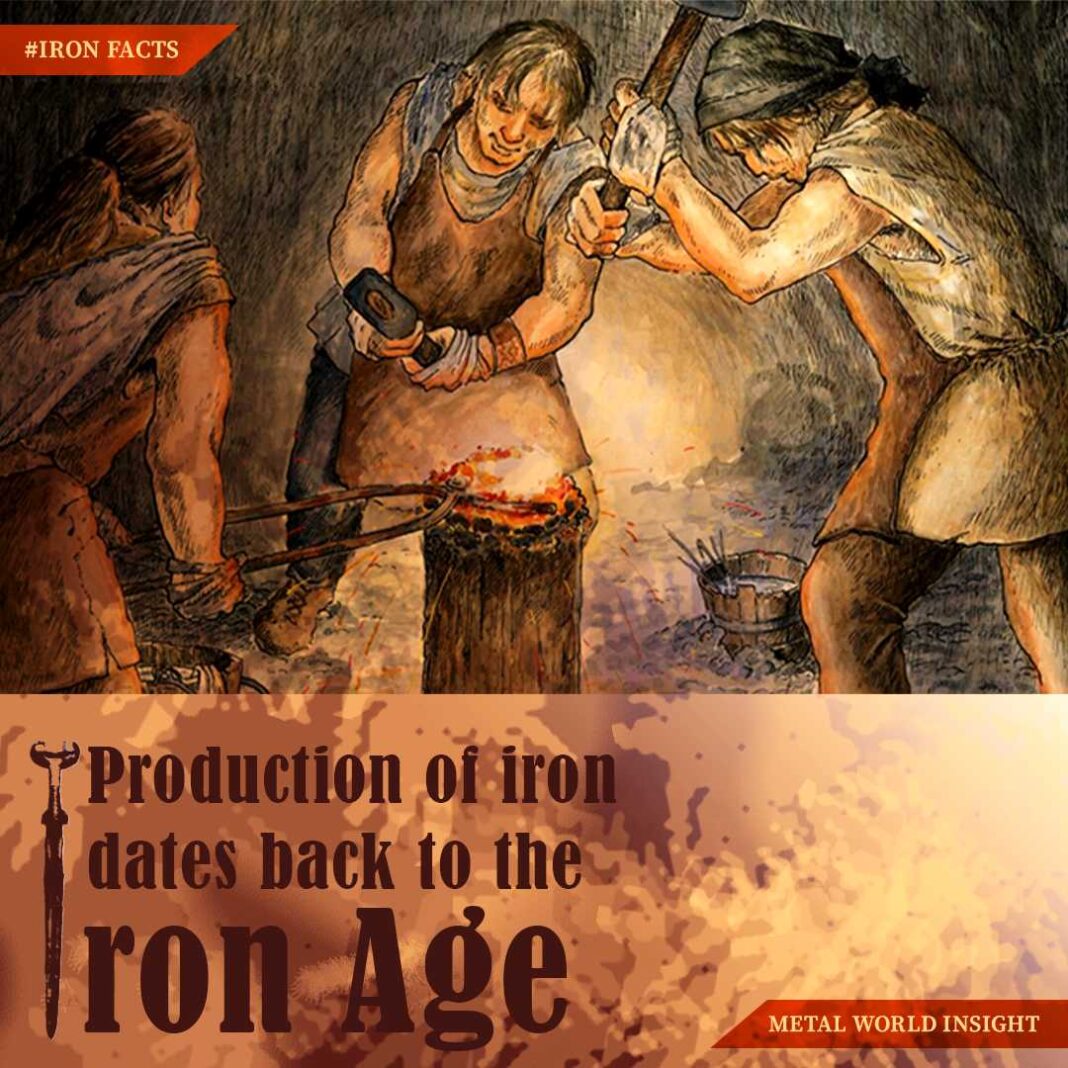The iron age is defined as the prehistoric time which succeeded the bronze age and had witnessed the predominance of ferrous metallurgy. Modern archaeological evidence suggests the commencement of large-scale production of iron in and around 1200 BC, marking the end of the Bronze Age.
This age is largely characterized by the mass production of tools, weapons, personal ornaments and pottery from iron. Further advancement led to production of weapons from steel which were much superior compared to bronze.. As per Anthony Snodgrass shortage of tin, as a part of the Bronze Age Collapse and trade disruptions in the Mediterranean forced metalworkers to find an alternative to bronze. This led to the development of iron which came as better alternative to cast bronze tools owing to its superior characteristics like lightweight and strength. Moreover, it was much cheaper and could easy be forged easily to various shapes.
The Iron Age began with the development of higher temperature smelting techniques. Later, tools and weapons were made from steel, an alloy consisting of iron with a carbon content between 0.02% and 1.7% by weight.
However, difficulty in commercial production of steel led to production of tools made of wrought iron. Although it was weaker than bronze, but was cheaper, and more easily sharpened, thus people used it more often. Additionally, iron can also be sharpened by grinding whereas bronze must be re-forged. All these factors led to more widespread use of iron in iron age.
Photo Courtesy: https://historyflame.com/



